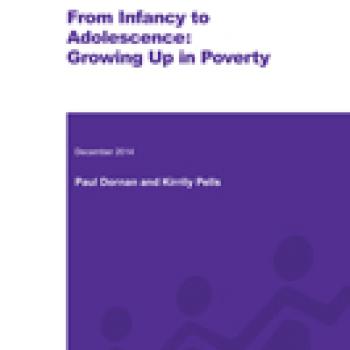
Improving children’s life chances is central to development in low- and middle-income countries. Half the population of sub-Saharan Africa are aged 18 or younger, and they comprise nearly half of all people living in extreme poverty worldwide. As the largest single demographic group affected by extreme poverty, children can no longer be seen as a ‘special interest group’. There is increasing recognition of inequalities within countries, and a recognition that some groups have been ‘left behind’ by development. Poverty undermines not only children’s rights to life, survival and development, as enshrined in the UN Convention on the Rights of the Child, but also the skills and capabilities that fast-changing economies need for future growth. Poverty in childhood is a key mechanism by means of which poverty persists between generations, and life-course analysis explains why this occurs. There is no better public-policy investment than in children.
In 2002 Young Lives began asking children and their families key questions about their lives. This paper considers evidence on inequalities in children’s development trajectories from the fourth round of survey interviews carried out in late 2013. Our central questions are to understand how, why and when inequalities become established through childhood. Our analysis takes account of household circumstances and characteristics to explore how children and young people’s trajectories diverge over time. We find that the poorest children, those in rural areas and/or from marginalised social groups, are consistently being ‘left behind’ in terms of nutritional status, learning and employment opportunities. We conclude by considering how policy interventions at different stages of the early life course can mitigate the development of such inequalities.
The findings are grouped around 5 key messages:
Children value school and want to study for longer, obtain better jobs than their parents, and delay marriage and starting a family. Stunting is profoundly damaging for children and is very common, particularly among the poorest groups. Early intervention is best but post-infancy change occurs, which needs to be better understood. Improving achievement levels for poor children is central to overcoming the global crisis in learning. Despite high aspirations for education and work, the reality at age 19 is very different. The poorest girls are the most likely to have married and had a child before the age of 19.
Improving children’s life chances is central to development in low- and middle-income countries. Half the population of sub-Saharan Africa are aged 18 or younger, and they comprise nearly half of all people living in extreme poverty worldwide. As the largest single demographic group affected by extreme poverty, children can no longer be seen as a ‘special interest group’. There is increasing recognition of inequalities within countries, and a recognition that some groups have been ‘left behind’ by development. Poverty undermines not only children’s rights to life, survival and development, as enshrined in the UN Convention on the Rights of the Child, but also the skills and capabilities that fast-changing economies need for future growth. Poverty in childhood is a key mechanism by means of which poverty persists between generations, and life-course analysis explains why this occurs. There is no better public-policy investment than in children.
In 2002 Young Lives began asking children and their families key questions about their lives. This paper considers evidence on inequalities in children’s development trajectories from the fourth round of survey interviews carried out in late 2013. Our central questions are to understand how, why and when inequalities become established through childhood. Our analysis takes account of household circumstances and characteristics to explore how children and young people’s trajectories diverge over time. We find that the poorest children, those in rural areas and/or from marginalised social groups, are consistently being ‘left behind’ in terms of nutritional status, learning and employment opportunities. We conclude by considering how policy interventions at different stages of the early life course can mitigate the development of such inequalities.
The findings are grouped around 5 key messages:
Children value school and want to study for longer, obtain better jobs than their parents, and delay marriage and starting a family. Stunting is profoundly damaging for children and is very common, particularly among the poorest groups. Early intervention is best but post-infancy change occurs, which needs to be better understood. Improving achievement levels for poor children is central to overcoming the global crisis in learning. Despite high aspirations for education and work, the reality at age 19 is very different. The poorest girls are the most likely to have married and had a child before the age of 19.
